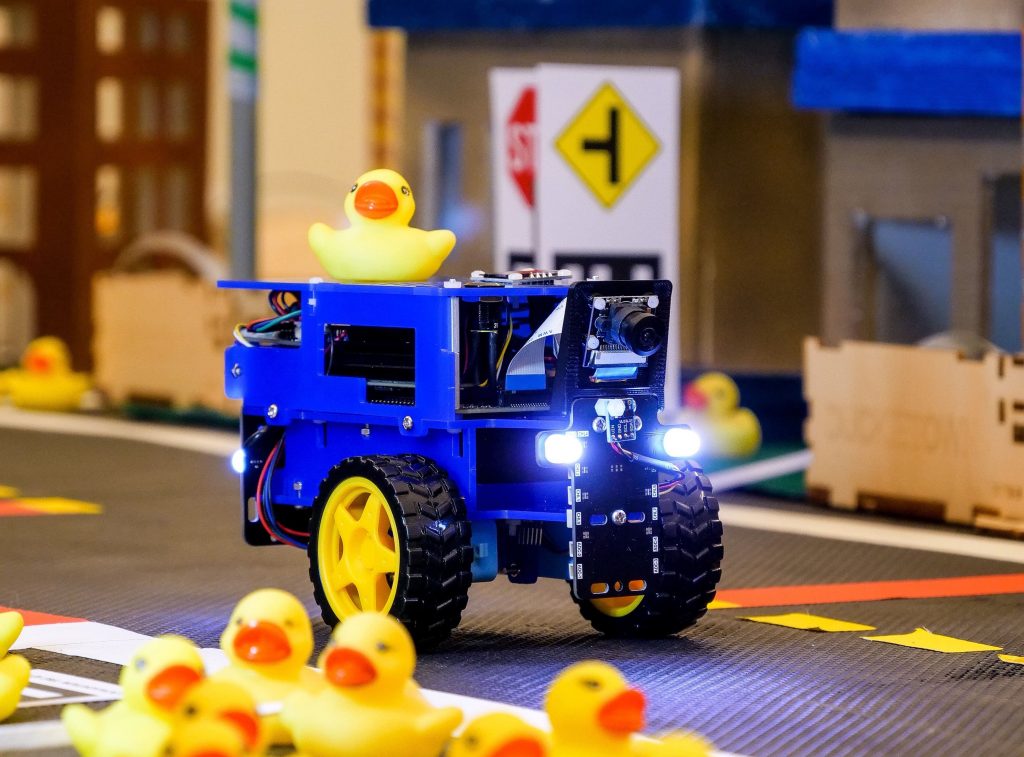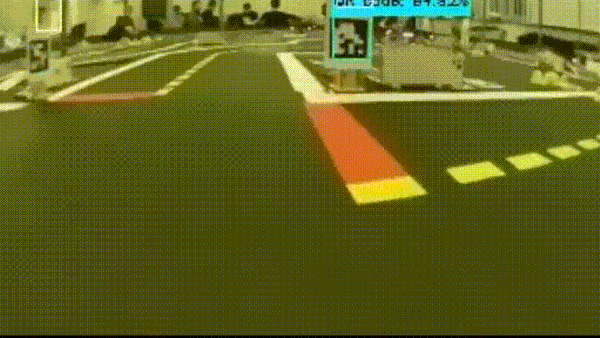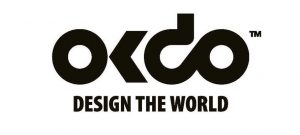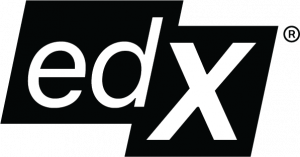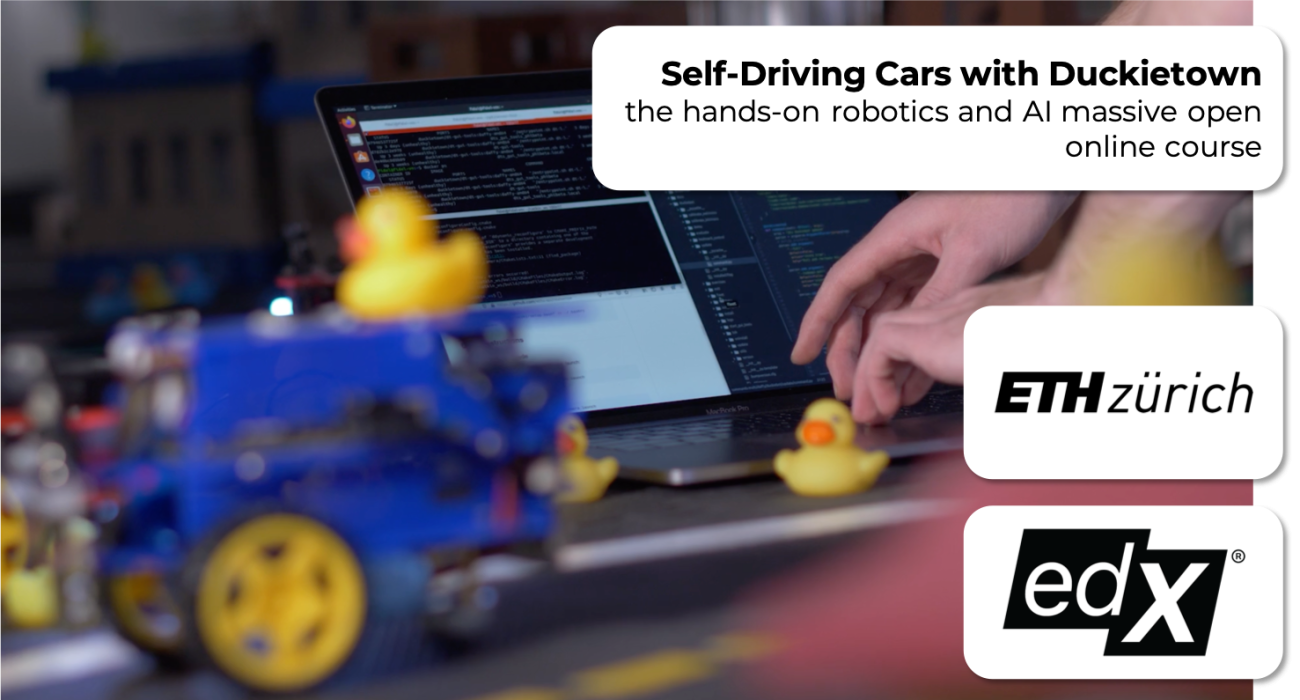
Author: Duckietown Admin

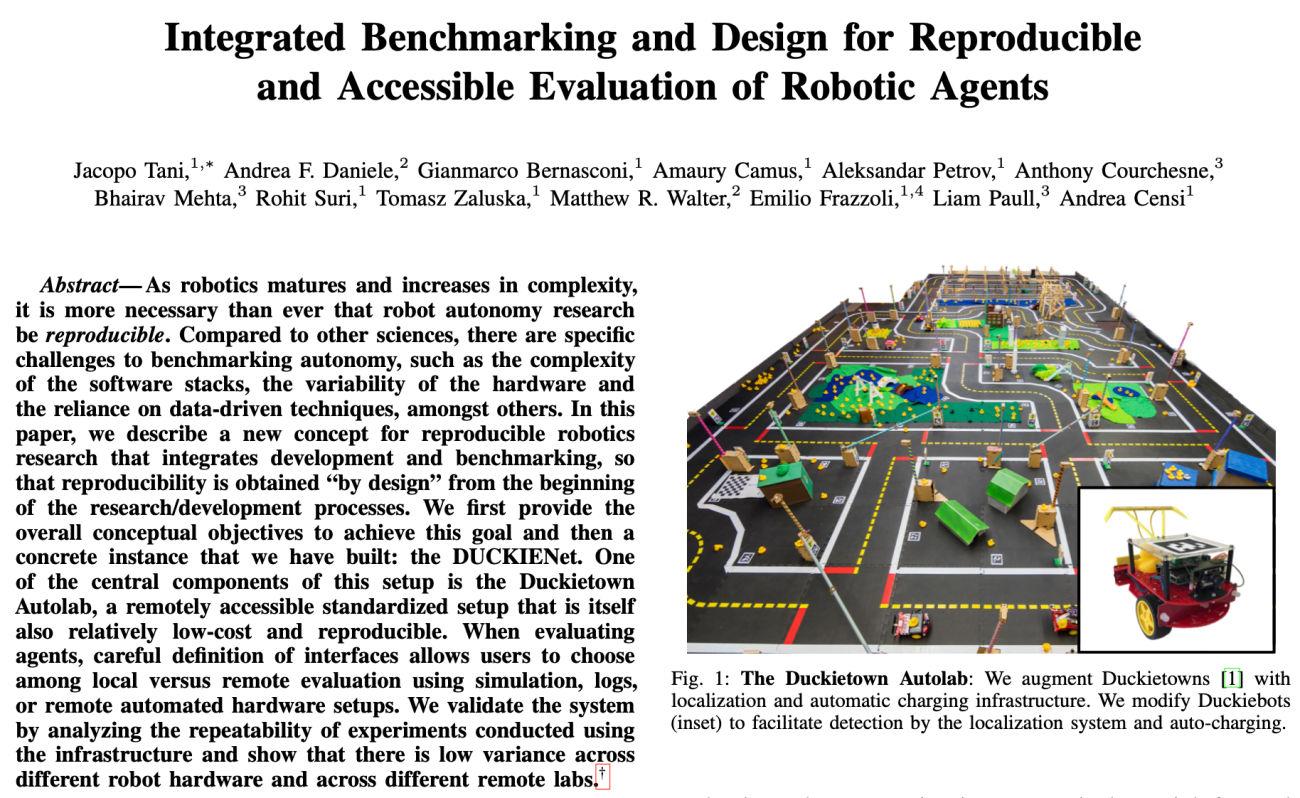
Integrated Benchmarking and Design for Reproducible and Accessible Evaluation of Robotic Agents
- Integrated Benchmarking and Design for Reproducible and Accessible Evaluation of Robotic Agents
- Jacopo Tani, Andrea F. Daniele, Gianmarco Bernasconi, Amaury Camus, Aleksandar Petrov, Anthony Courchesne, Bhairav Mehta, Rohit Suri, Tomasz Zaluska, Matthew R. Walter, Emilio Frazzoli, Liam Paull, Andrea Censi
- 2020 IEEE/RSJ International Conference on Intelligent Robots and Systems (IROS) October 25-29, 2020, Las Vegas, NV, USA (Virtual)
- ArXiv version download: arXiv:2009.04362v1
- Find the code here
Integrated Benchmarking and Design for Reproducible and Accessible Evaluation of Robotic Agents
Why is this important?
As robotics matures and increases in complexity, it is more necessary than ever that robot autonomy research be reproducible.
Compared to other sciences, there are specific challenges to benchmarking autonomy, such as the complexity of the software stacks, the variability of the hardware and the reliance on data-driven techniques, amongst others.
We describe a new concept for reproducible robotics research that integrates development and benchmarking, so that reproducibility is obtained by design from the beginning of the research/development processes.
We first provide the overall conceptual objectives to achieve this goal and then a concrete instance that we have built: the DUCKIENet.
The Duckietown Automated Laboratories (Autolabs)
One of the central components of this setup is the Duckietown Autolab (DTA), a remotely accessible standardized setup that is itself also relatively low-cost and reproducible.
DTAs include an off-the-shelf camera-based localization system. The accessibility of the hardware testing environment through enables experimental benchmarking that can be performed on a network of DTAs in different geographical locations.
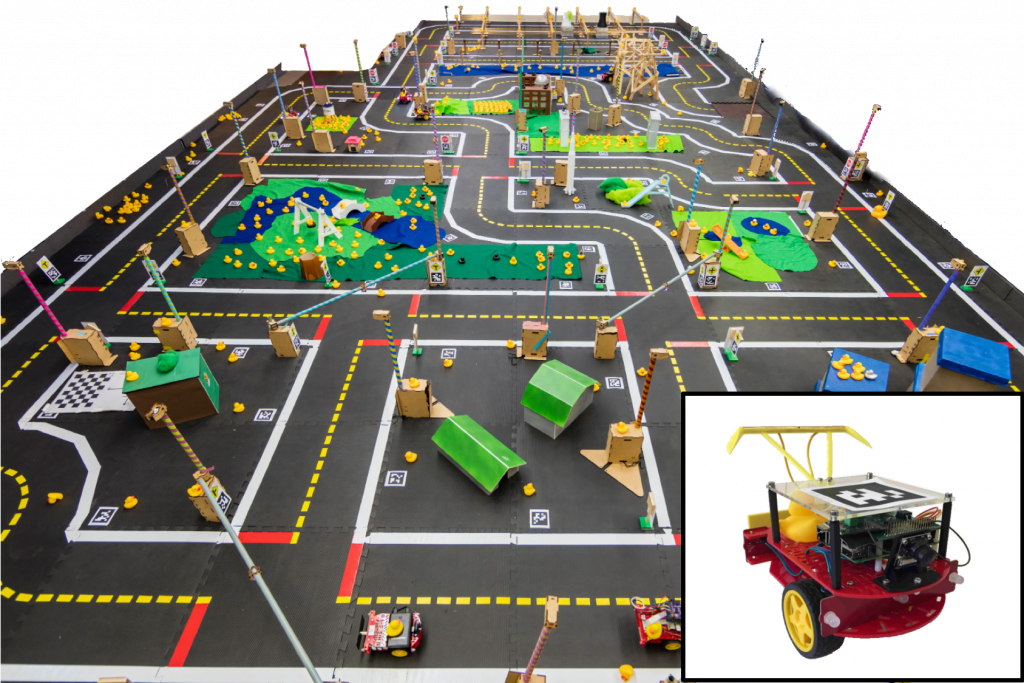
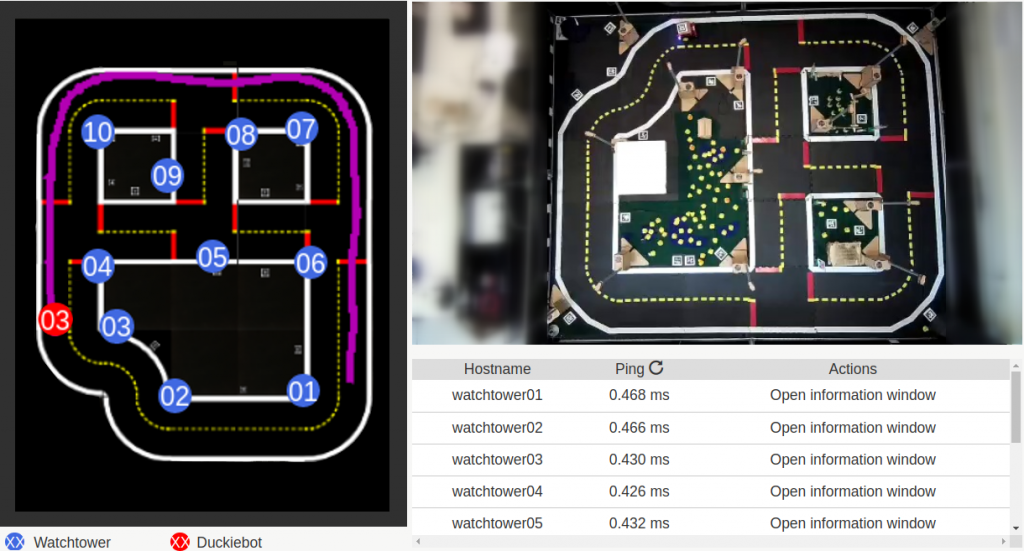
The DUCKIENet
When evaluating agents, careful definition of interfaces allows users to choose among local versus remote evaluation using simulation, logs, or remote automated hardware setups. The Decentralized Urban Collaborative Benchmarking Environment Network (DUCKIENet) is an instantiation of this design based on the Duckietown platform that provides an accessible and reproducible framework focused on autonomous vehicle fleets operating in model urban environments.
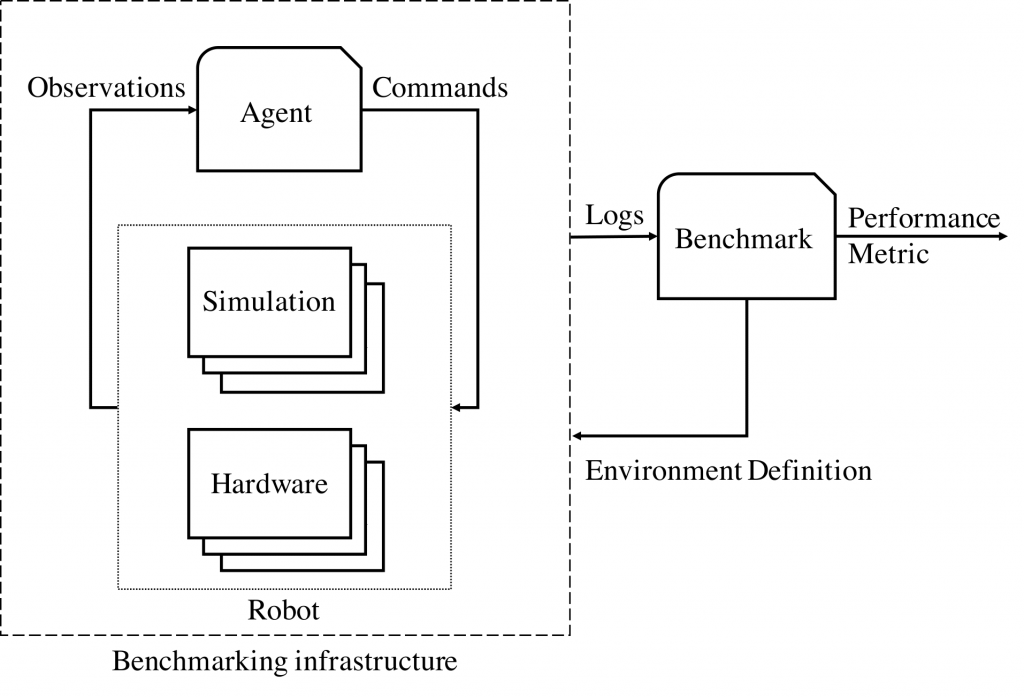
The DUCKIENet enables users to develop and test a wide variety of different algorithms using available resources (simulator, logs, cloud evaluations, etc.), and then deploy their algorithms locally in simulation, locally on a robot, in a cloud-based simulation, or on a real robot in a remote lab. In each case, the submitter receives feedback and scores based on well-defined metrics.

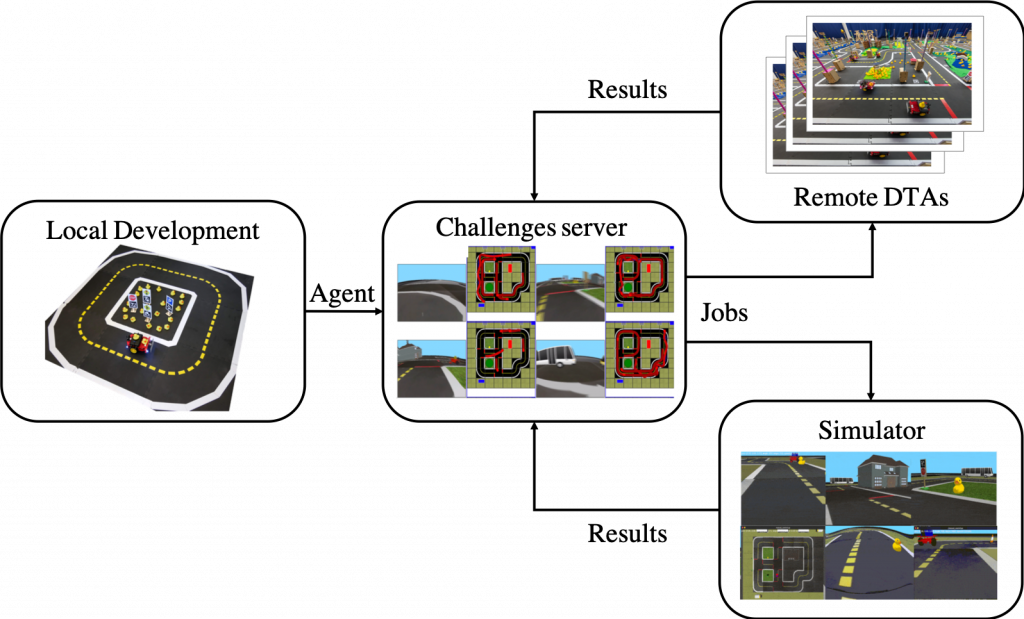
Validation
We validate the system by analyzing the repeatability of experiments conducted using the infrastructure and show that there is low variance across different robot hardware and across different remote labs. We built DTAs at the Swiss Federal Institute of Technology in Zurich (ETHZ) and at the Toyota Technological Institute at Chicago (TTIC).
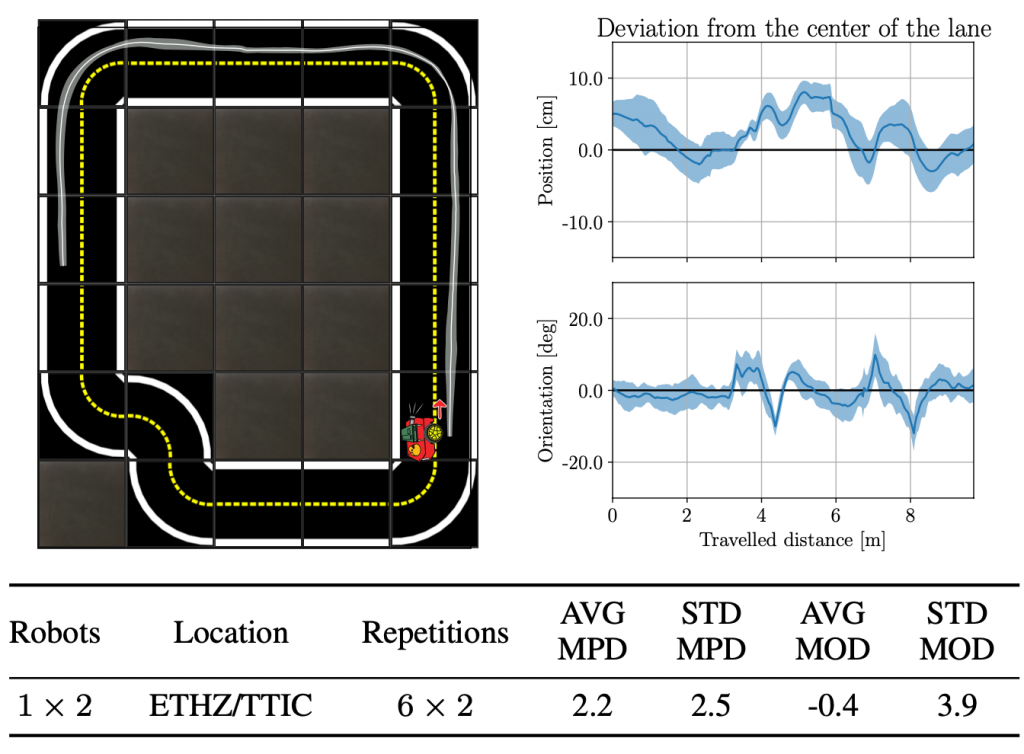
Conclusions
Our contention is that there is a need for stronger efforts towards reproducible research for robotics, and that to achieve this we need to consider the evaluation in equal terms as the algorithms themselves. In this fashion, we can obtain reproducibility by design through the research and development processes. Achieving this on a large-scale will contribute to a more systemic evaluation of robotics research and, in turn, increase the progress of development.

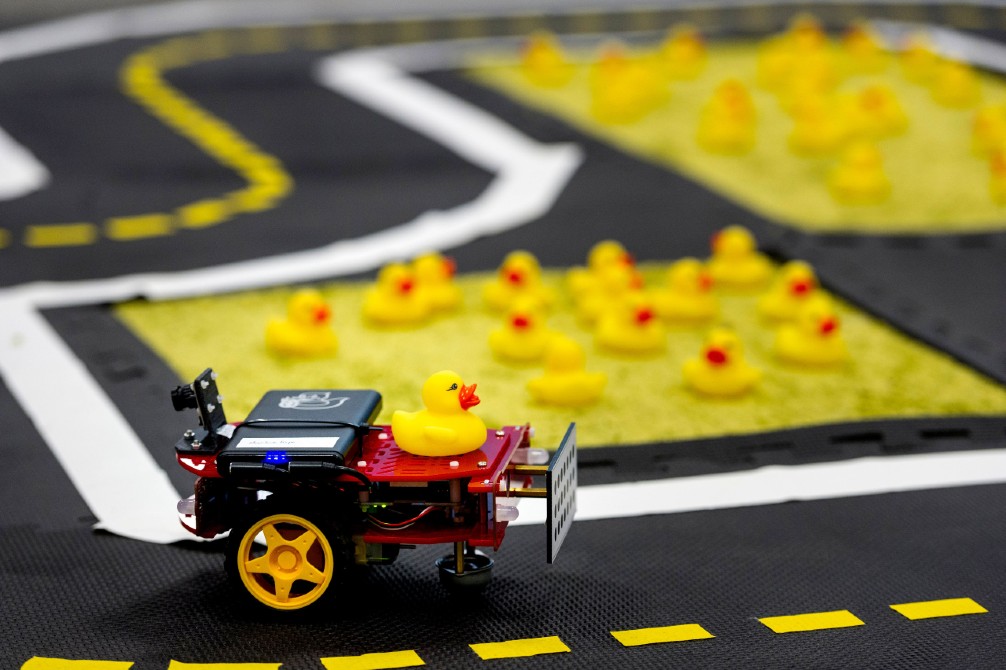
If you found this interesting, you might want to:
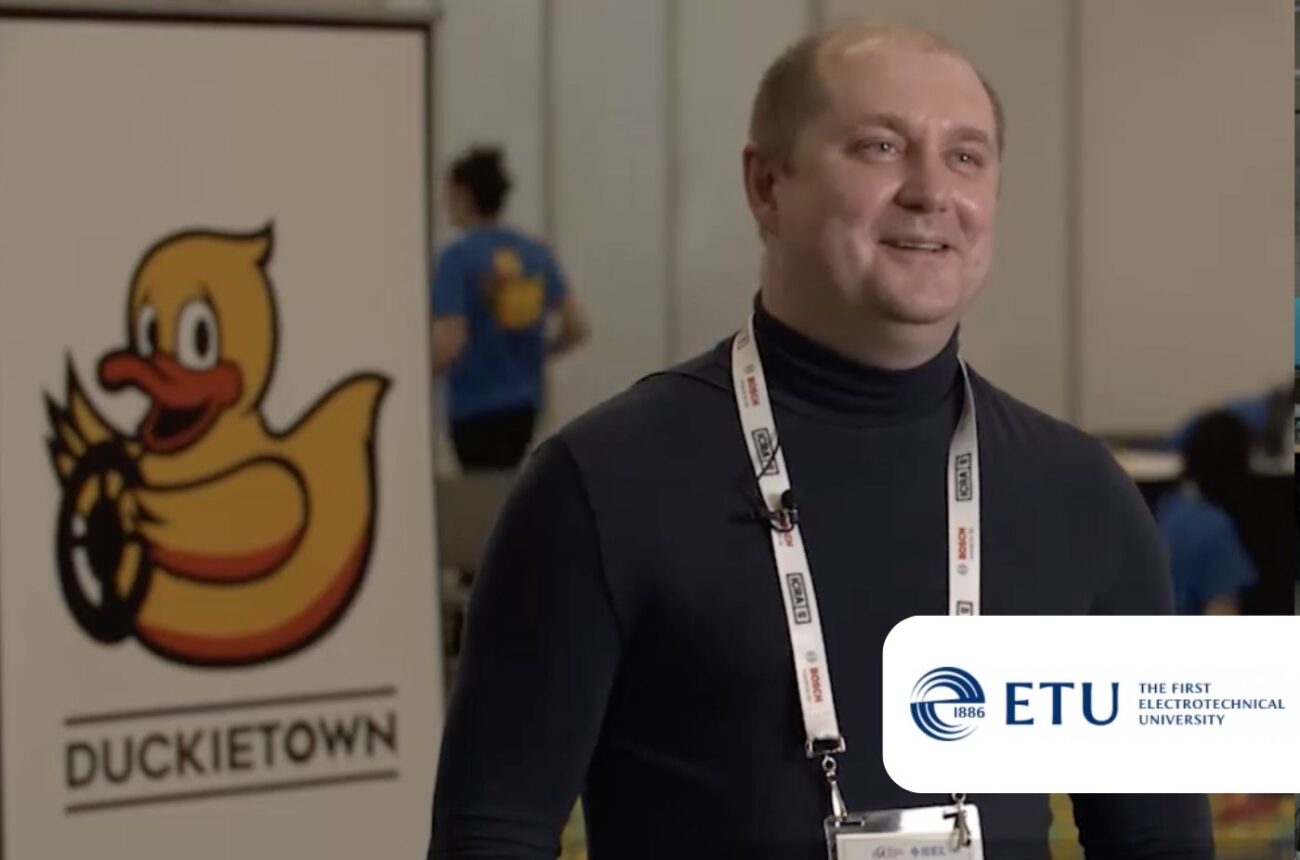
STEM Intensive Learning with Prof. Krinkin
In the world of engineering education, there are many excellent courses, but often the curriculum has one serious drawback – the lack of good connectivity between different topics. Over in Saint Petersburg, Russia, Kirill Krinkin from SPbETU and JetBrains Research has been using Duckietown to address this problem through an intensive STEM winter course.
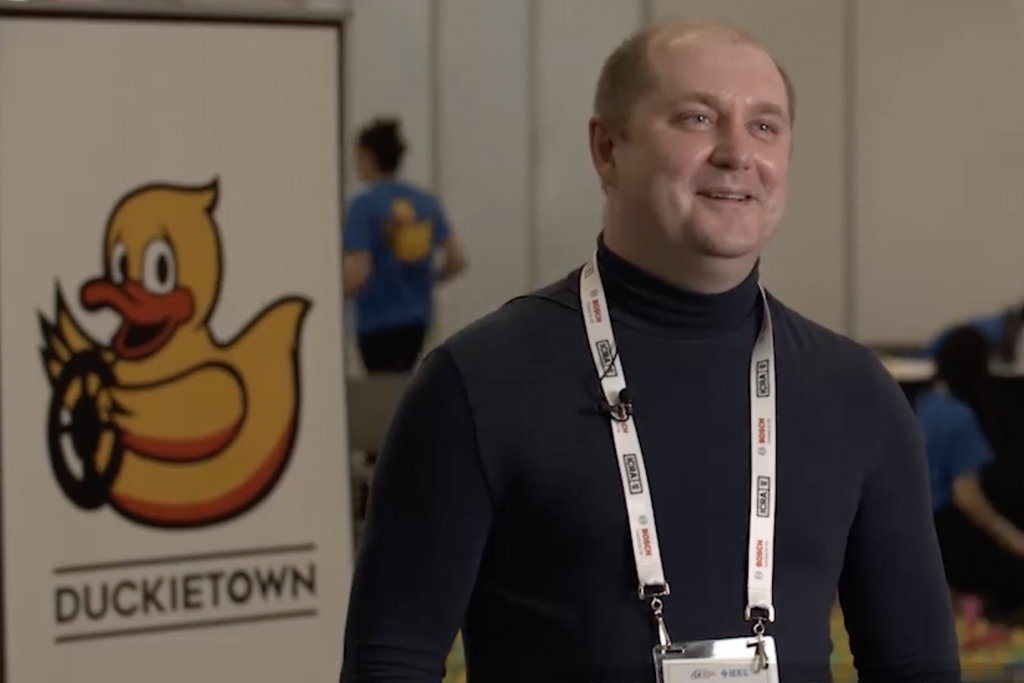
STEM Intensive Learning Approach
by Kirill Krinkin
The first part of the school program was a week of classes in the base topic areas which were chosen to complement each other and help students see the connection between seemingly different things – mathematics, electronics and programming.
Of course, the main goal of the program was to give students the opportunity to put their new found knowledge into practice themselves.
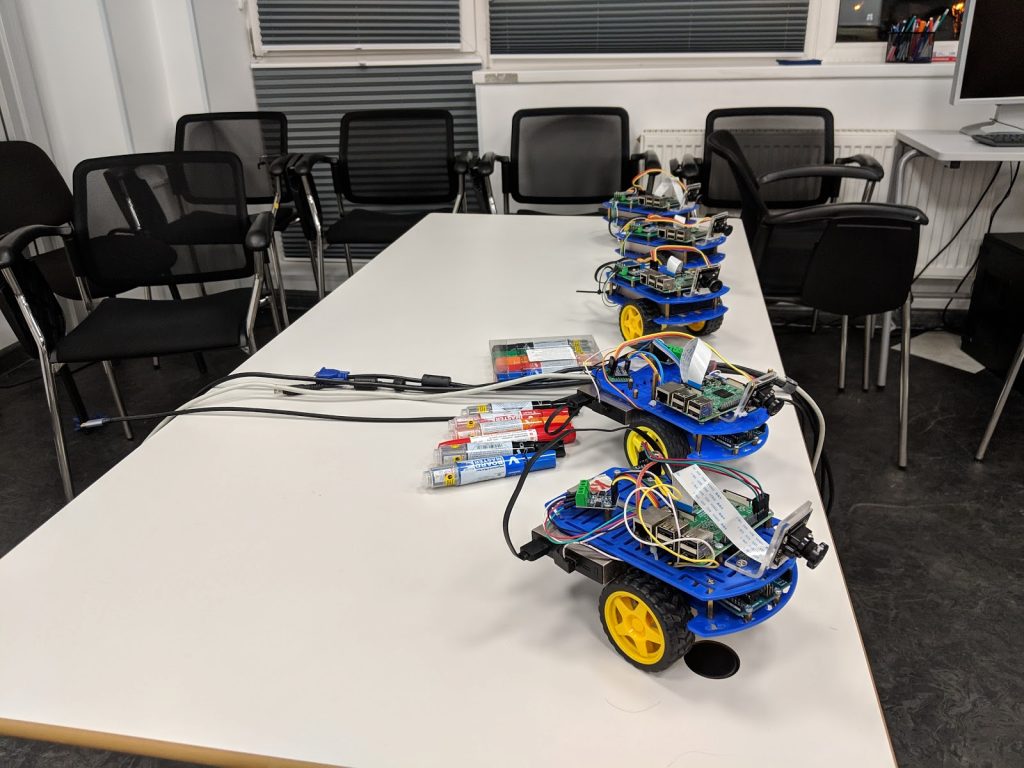
Duckietown was the perfect fit for our course because it offered a hands-on learning experience for all of our main topics areas, and once we covered those subject in the first lessons, we challenged the students with much more complex tasks – in the form of projects – in the second half of the course. It made for an exciting and engaging curriculum because students could address a problem, write a program to solve it, and then immediately launch it on a real robot.
The main advantage of Duckietown compared to many other platforms is that there is a very small learning curve: people who knew nothing about programming and robotics started working on projects after only a few days!
Overview of the course
Part 1 – Main Topic Areas
Subject 1: Linear Algebra
Students spent one day studying vectors and matrices, systems of linear equations, etc. Practical tasks were built in an interactive mode: the proposed tasks were solved individually, and the teacher and other students gave comments and tips.
Subject 2: Electricity and Simple Circuits
Students studied the basics of electrodynamics: voltage, current, resistance, Ohm’s law and Kirchhoff’s laws. Practical tasks were partially done in the electric circuits simulator or performed on the board, but more time was devoted to building real circuits, such as logic circuits, oscillatory circuits, etc.
Subject 3: Computer Architecture
In a sense, a bridge connecting physics and programming. Students studied the fundamental basis, the significance of which is more theoretical than practical. As a practice, students independently designed arithmetic-logic circuits in the simulator.
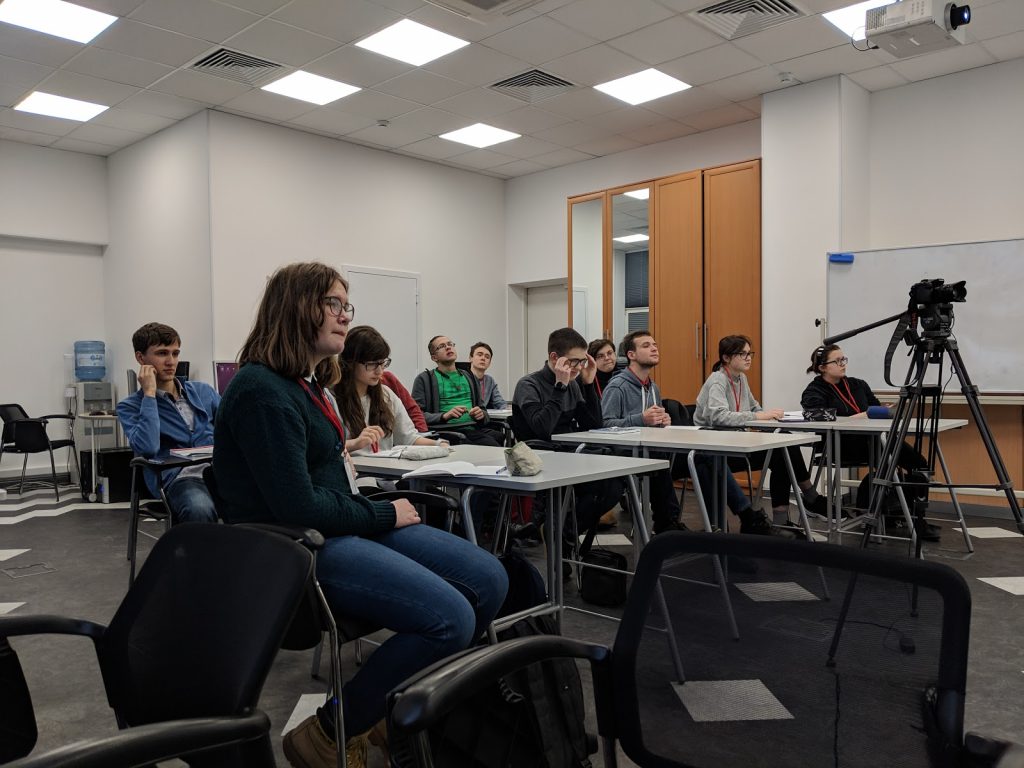


Subject 4: Programming
Python 2 was chosen as the programming language, as it is used in programming under ROS. After we taught the material and gave examples of solving problems, students were challenged with their own problems to solve, which we then evaluated.
Subject 5: ROS
Here the students started programming robots. Throughout the school day, students sat at computers, running the program code that the teacher talked about. They were able to independently launch the basic units of ROS, and also get acquainted with the Duckietown project. At the end of this day, students were ready to begin the design part of the course – solving practical problems.
Part 2 – Projects
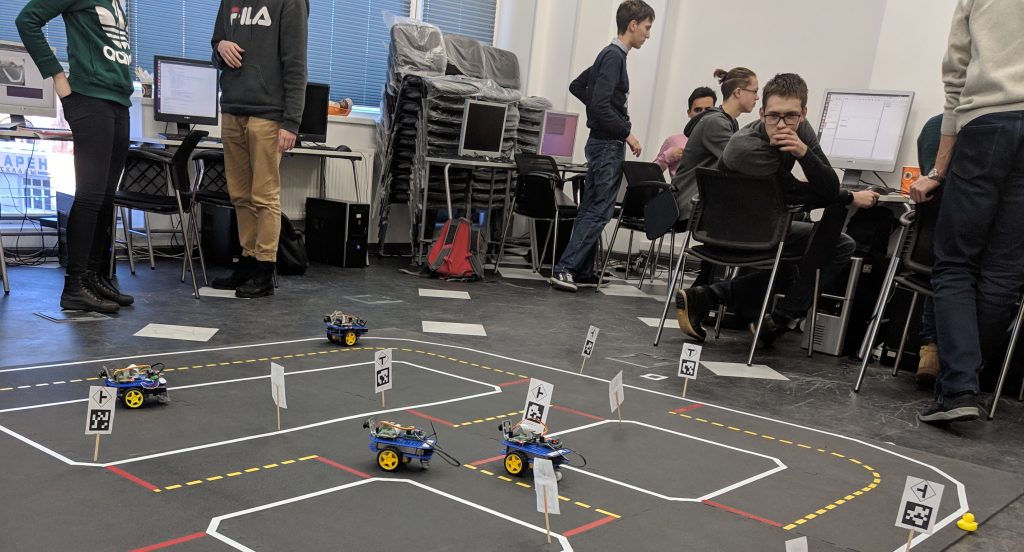
1. Calibration of colors
Duckiebots needs to calibrate the camera when lighting conditions change, so this project focussed on the task of automatic calibration. The problem is that color ranges are very sensitive to light. Participants implemented a utility that would highlight the desired colors on the frame (red, white and yellow) and build ranges for each of the colors in HSV format.
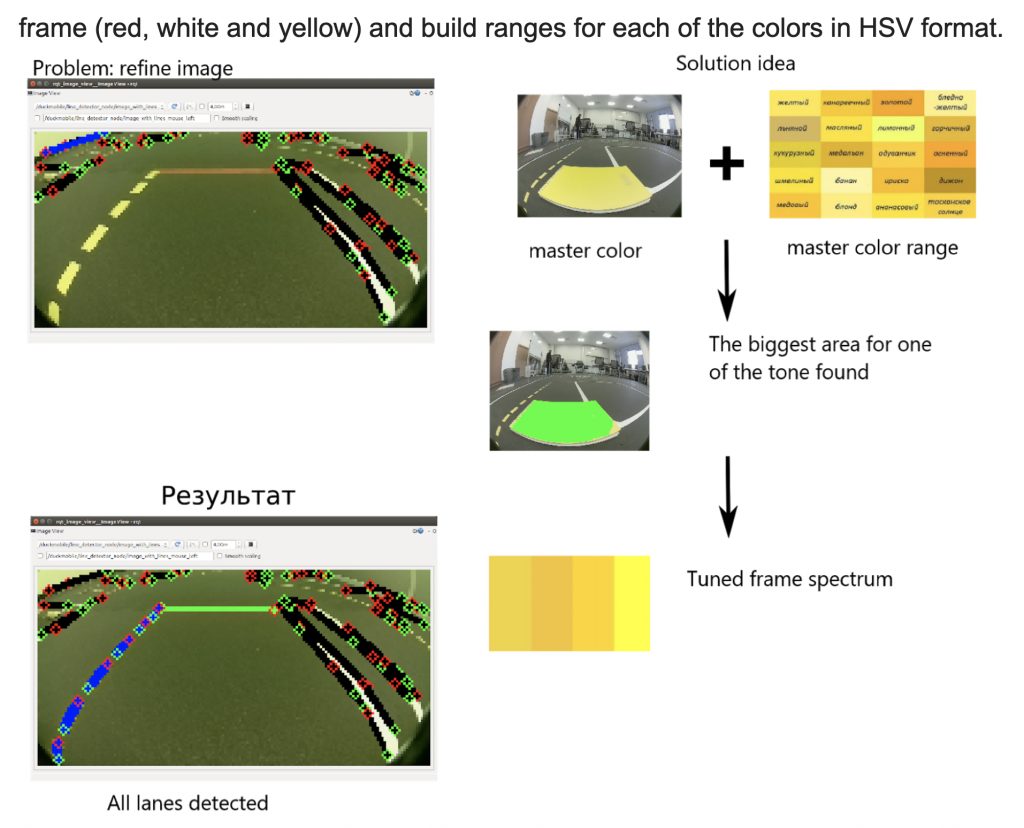
2. Duck Taxi
The idea of this project was that Duckiebot could stop near some object, pick it up and then continue along, following a certain route. Of course, a bright yellow Duckie was the chosen passenger. The participants divided this task into two: detection and movement along the graph.
drive while Duckie is not detected
Duckie identified as a yellow spot with an orange triangle 🙂
Building a route according to the road graph and destination point
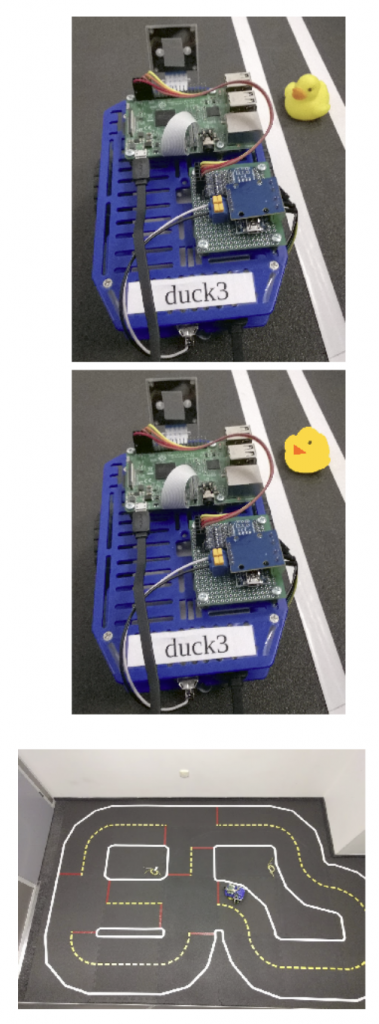
3. Building a road map
The goal of this project was to build a road map without providing a priori environmental data for the Duckiebot, relying solely on camera data. Here’s the working scheme of the algorithm developed by the participants:
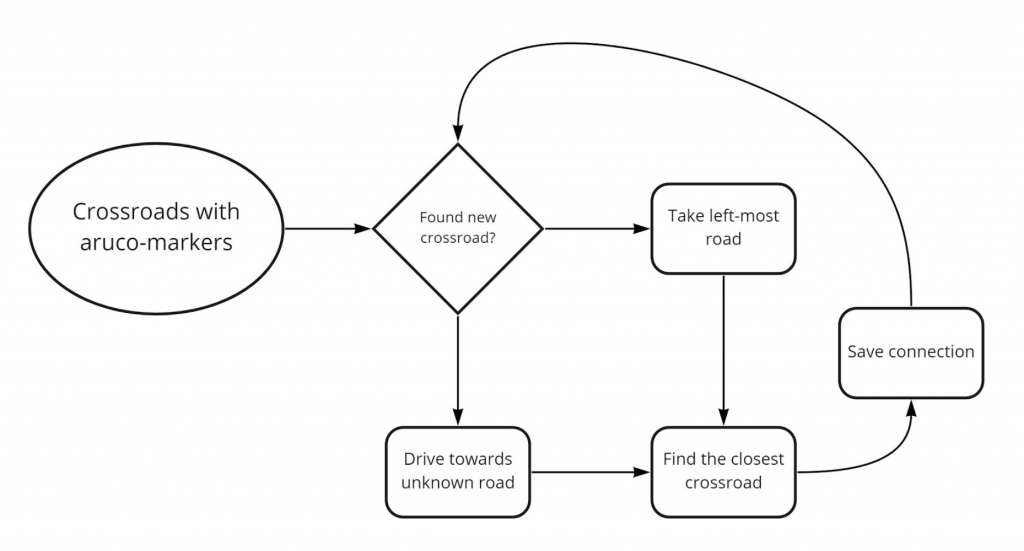
4. The patrol car
This project was invented by the students themselves. They offered to teach one Duckiebot, the “patrol”, to find, follow, and stop an “intruding” Duckiebot. The students used ArUco markers to identify the Intruder on the road as they are easy to work with and they allow you to determine the orientation and distance of the marker. Next, the team changed the state machine of the Patrol Duckiebot so that when approaching the stop-line the bot would continue through the intersection without stopping. Finally, the team was able to get the Patrol Duckiebot to stop the Intruder bot by connecting via SSH and turning it off. The algorithm of the patrol robot can be represented as the following scheme:

Summary
Students walked away from our STEM intensive learning program with the foundations of autonomous driving, from the theoretical math and physics behind the programming and circuitry to the complex challenges of navigating through a city. We were successful in remaining accessible to beginners in a particular area, but also providing materials for repetition and consolidation to experienced students. Duckietown is an excellent resource for bringing education to life.
After our course ended students were asked about their experience. 100% of them said that the program exceed their expectations. We can certainly say that the Duckietown platform played a pivotal role in our success.
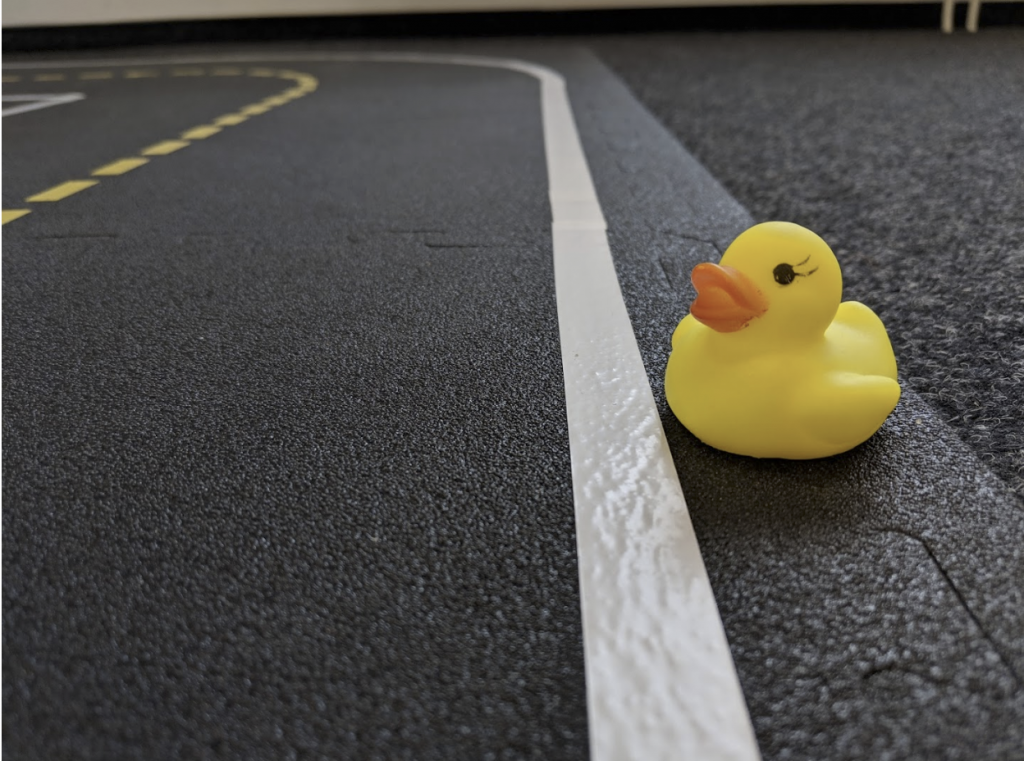
Learn to Program Self-Driving Cars With Duckietown – IEEE Spectrum
May 2019: AI Driving Olympics at ICRA 2019
Dec 7, 2018: AI Driving Olympics at NIPS 2018
August 6-8, 2018: Duckietown Summer School, Taiwan
The second edition of the Duckietown Summer School will take place August 6-8 in Taiwan.

Front-end developer (PHP)
We are looking for a PHP website developer to improve the appearance and functionality of the Duckietown website.
We would like to implement new functionality such as advanced user group management.
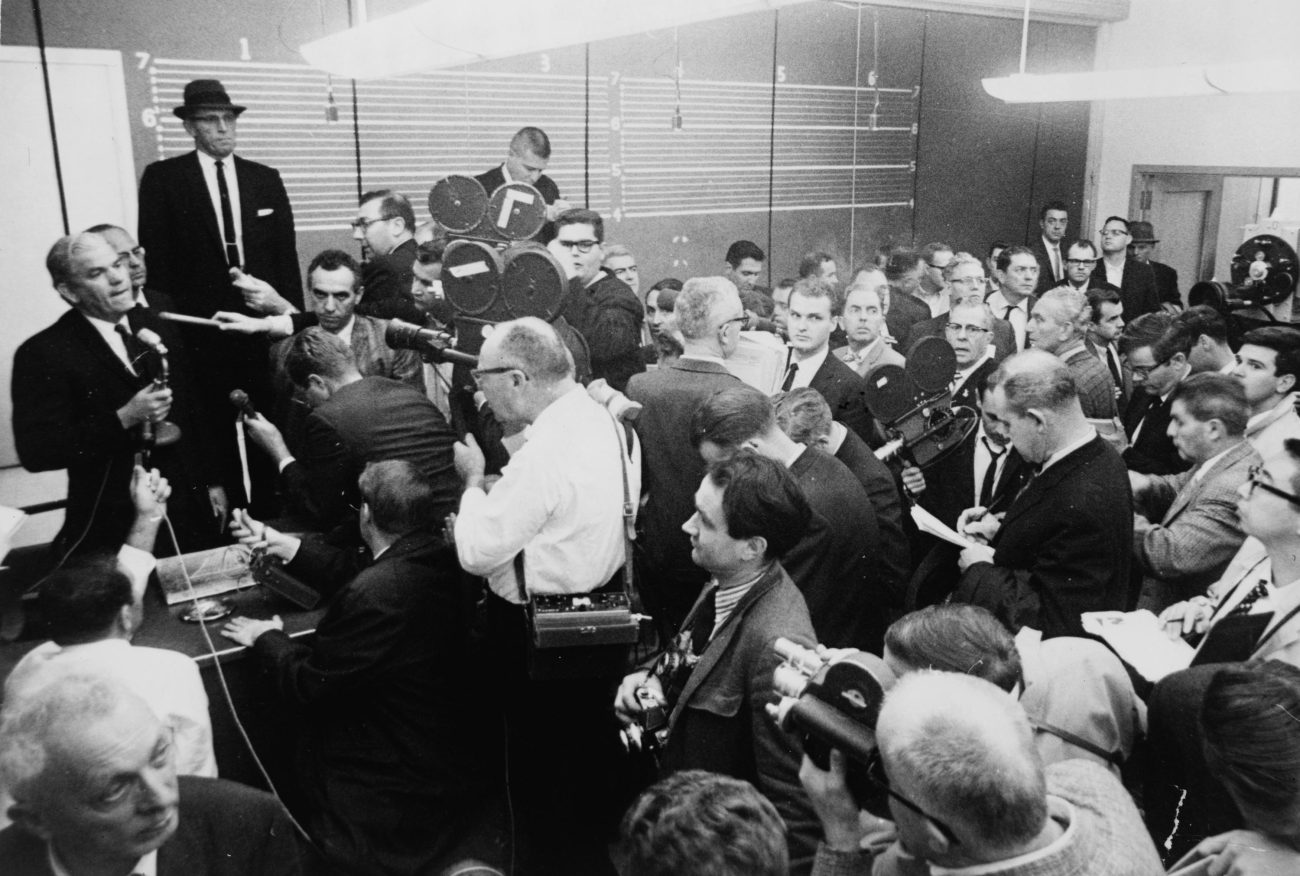
Media Relations Manager
We are looking for a media relations manager to interact with press/media.
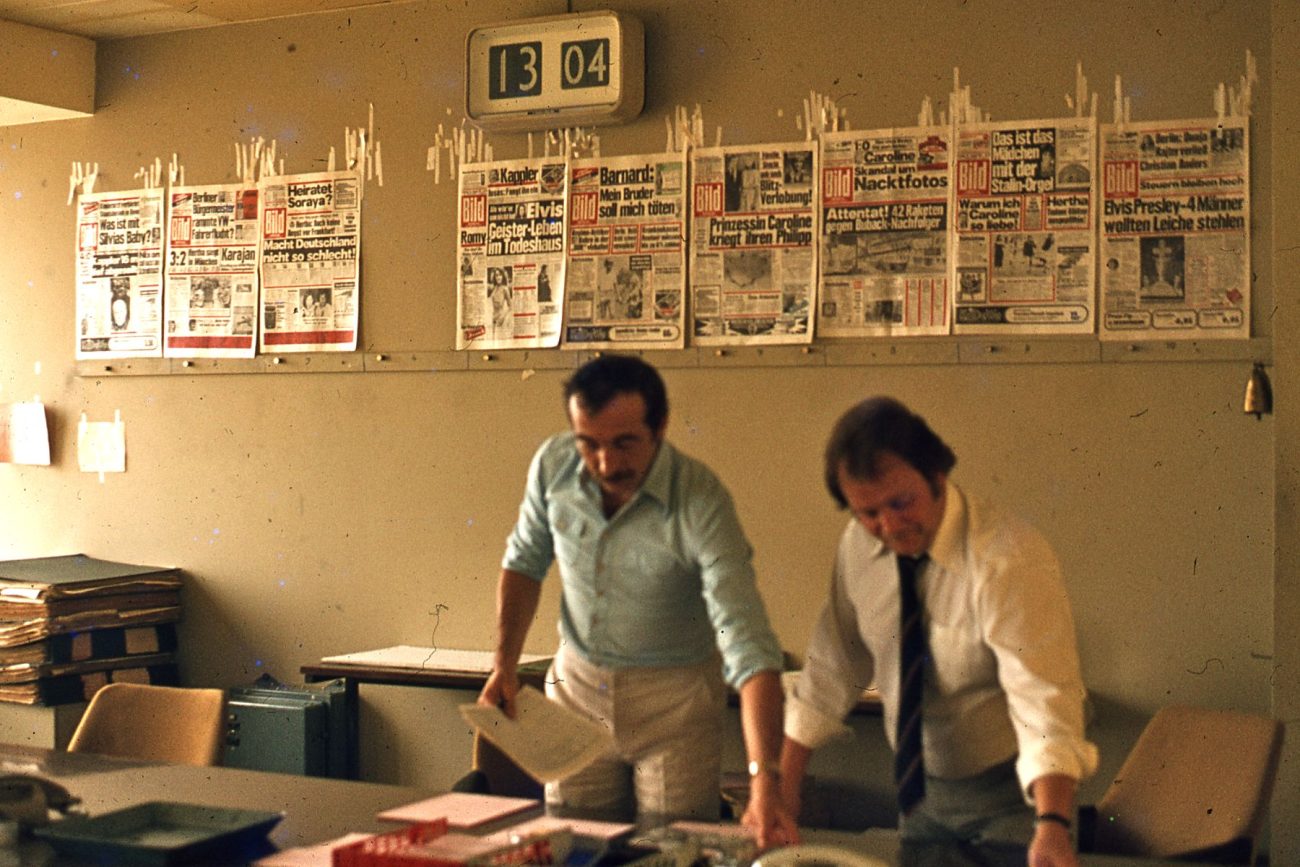
Website editor
We are looking for an editor for our website to coordinate writing and polishing blog posts and web pages.



